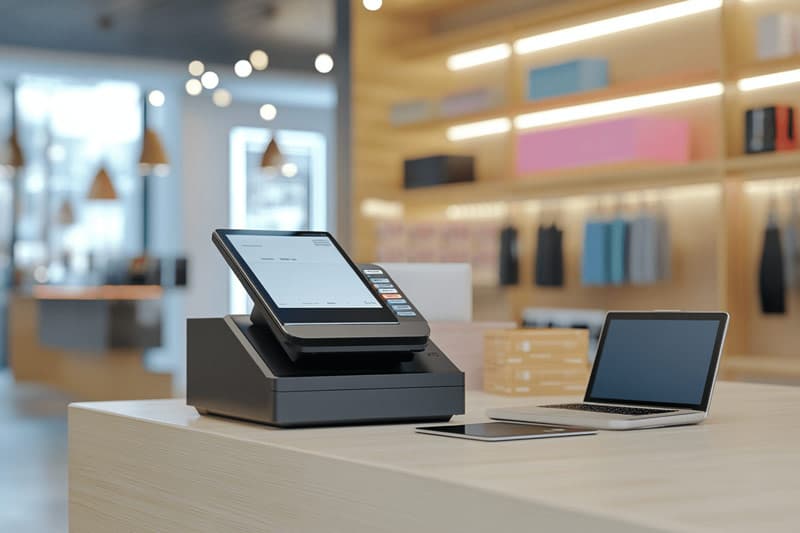There are many reasons not to establish a full-fledged merchant account from the start. You may want to get up and running quickly and with minimal paperwork, or you may need to test a product line expansion to justify a dedicated account. The good news is that there are still ways to accept cards with more recent credit card payment processing options that do not require your own merchant identification number (MID). In this article, we share how third-party payment platforms operate, when they’re beneficial, where they can sting, and how to compare Stripe vs a merchant account later down the line.
What Does “Without A Merchant Account” Mean, Specifically?
A merchant account is a dedicated relationship with an acquiring bank where you receive your custom MID, pricing, and terms. However, when you forgo this process, you take the opportunity to secure access through a platform that masters accounts for everyone under one umbrella. This means no underwriting, risk monitoring, and payouts – all for your sake. Platform processors are known as “aggregators,” “payment facilitators,” or “payment platform processors” with plug-and-play credit card payment solutions that require minimal setup[1].
Choosing Stripe Vs Merchant Account: How The Models Differ
Aggregators like Stripe work on shared rails and get you started quickly with standardized pricing and decreased paperwork. A merchant account requires time-intensive underwriting to get a personalized assessment, giving you later on more control, direct pricing models like interchange plus, and transparent value for chargeback defense[2]. At the beginning, companies value speed and efficiency; down the line, they value flexibility and cost effectiveness. It has less to do with branding and more with taking advantage of what makes sense for where you fall along that timeline.
When Third-Party Payment Platforms Make Sense
If you’re looking to validate a new store, have seasonal volume, or process just under mid-six-figures annually, third-party platforms are a helpful solution at the onset. They offer automatic credit card and wallet acceptance and easy invoicing without requiring payment expertise. However, the catch is that the rules are less customizable for disputes and potential volume flags, and there are fewer opportunities to negotiate your fees. As growth stabilizes, many merchants shift to a dedicated pricing and policy arrangement to leverage.
The Risky Side For Hidden Costs, Limits And More
Aggregators use standardized risk controls to protect the platform as a whole; this means reviewing accounts with rapid changes in volume or products, reserving acquired revenue, or addressing funding delays that create efficiency challenges. Pricing is simplified across the board, but can end up costing more than interchange plus fees once volume increases; therefore, watch your 1099-K thresholds, payout reconciliations, and the fine print on prohibited products to avoid your own holds[3].
Security And Compliance With Hosted Pages And Embedded Flows
Using hosted fields or redirects keeps PCI Self-Assessment Questionnaire types at a lower scope, which eases audits and reduces exposure. However, additional settings include enabling address verification (AVS) and CVV options where appropriate, and rotating API keys should occur regularly [4]. Good health here increases approval rates and grounds you better in disputes.
Cost Modeling: Aggregator Pricing vs Interchange Plus
Standardized pricing is predictable, which is painless for smaller volumes. Yet as average ticket prices and monthly sales grow, interchange plus tends to be more advantageous, since you’re closer to the actual costs with transparency into the markup. What makes the most sense, however, is assessing your last 90 days of sales by dollar amount to compare between the two quoted options, since numbers trump guesses.
Migration: Moving From Third-Party Payment Platforms To A Merchant Account
Migration should occur when your volume or complexity warrants it; therefore, inquire whether token portability allows saved cards to transfer as vault tokens instead of re-collecting numbers. Map out migrating one store or one channel first during testing; monitor authorization rates or funding rates for two weeks before cutting over everything else. If you’d like help scoping any needed hardware, gateways, or policy alterations, Payment Nerds can render the migration decision easier by helping build out the switch, then taking it over once it’s working efficiently.
Six Credit Card Payment Processing Solutions Without A Merchant Account That Make Sense
Hosted Checkout Pages
Hosted pages save sensitive information from hitting your servers because you're granted access to create a secure pay button or link option on your site. This takes seconds to set up, PCI scope remains small, and you're operating with card and wallet acceptance from day one. This is best for pre-orders, simple stores or service providers that would rather not delve into custom coding while feel for volume out.
No-Code Ecommerce And Buy Buttons
Store builder tools as well as link-to-pay options allow you to easily publish a catalog, set up tax and shipping preferences and charge payment without the need to build anything through engineering. You manage the inventory and fulfillment from a dashboard while the platform takes care of gateways, fraud checks and 3-D Secure if necessary. This is a quick opportunity for creators, pop-up shops and NGOs.
Invoice And Payment Links
Invoice links can be sent via email or SMS with a pay now button for customers to use credit cards or wallets from there. You can add deposits and partial payments as well as automatic receipts for automatic follow up resolutions. This is great for B2B and services for clean digital collections and clear receipts instead of paper checks.
Tap To Pay On Mobile
Modern smartphones accept contactless cards without needing expensive hardware which is a great solution for events, deliveries or on-the-go services where immediacy is critical. You still have access to itemized receipts and refunds as well as basic tipping flows when necessary. This function is surprisingly robust for taking sales when you least expect it.
Platform Marketplaces
When you sell through established platforms, their payment processor handles credit cards on your behalf while paying you out as per your share of costs. You sacrifice fee-per-seller and policy considerations in exchange for built-in traffic and plug-and-play payments. For many sellers, it's worth it during this phase of their evolution until they grow their direct channel.
Buy Now, Pay Later As An Added Benefit
This is not an entryway tool but coupling acceptance of credit card payment solutions with BNPL can help boost conversion rates and average order value. The lender takes the risk and pays you upfront while customers pay over time. Use BNPL sparingly for higher-ticket items, however, and always assess the impact for returns and disputes.
Implementation Checklist To Avoid Issues At Launch
Write out what’s your legal name of your organization plus its descriptor plus test a real order at a small value plus refund it back before switching everything live so pendings don’t happen where orders get stuck/lost; enable fraud checks to block discrepancies; establish refund windows according to your policy; retain receipts/invoicing details itemized; teach your staff about two-three common decline codes that they can explain logically[5].
FAQs
Q: Can I run an ever-growing store on third-party payment platforms?
A: You can! Many companies do! The inflection point is usually fee-related and is also controlled by compliance requirements. When the costs outweigh the benefits, or you need more tailored rules for disputes, or funding a dedicated account makes more sense.
Q: What are the largest risks of operating without a merchant account?
A: You agree to standardized terms along with everyone else, which can mean reviews/reserves/chargeback processes. Sudden spikes in volume, accumulated type changes/revenue increases, and chargeback activity can trigger holds on accounts. Established policies combined with steady fulfillment/regret-free traffic can keep those red flags at bay.
Q: Does “Stripe vs merchant account” matter for approval rates?
A: Approval rates do not hinge solely on provider name – they’re affected by data quality impact (plus fraud settings), plus issuer approval (for chargebacks). Aggregators tend to achieve higher approvals at small-to-mid volume; dedicated setups enable fine-tuned routing/descriptors/evidence, which can improve approvals and win rates at scale.
Q: Are hosted checkout pages more secure than embedded secure fields?
A: Hosted ones reduce PCI scope plus eliminate sensitive fields existing on your server, which simplifies approval for many organizations; embedded fields should be using secure elements from your processor so cardholder data never touches your backend. Either can work if done safely.
Q: When should I shift from standardized pricing to interchange plus?
A: Run a three-month check, including average ticket price assessment, plus wallet mix, plus refunds if applicable; if there’s value in delta savings in combination with consistent volume, then request an interchange-plus quote while assessing savings after gateway/monthly fees; let the math tell you when it makes sense.
Sources
- PCI Security Standards Council. “PCI DSS Resources for Small Merchants.” Accessed November 2025.
- Federal Reserve. “Payments Systems and Compliance Standards.” Accessed November 2025.
- Internal Revenue Service. “Understanding Your Form 1099-K.” Accessed November 2025.
- Bankrate. “Credit Card Processing Fees, How They Work.” Accessed November 2025.
- NACHA. “ACH Network Overview and Rules.” Accessed November 2025.











